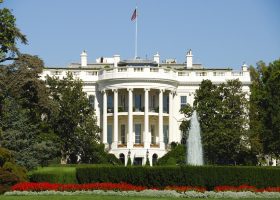


The paper, called “Political Cycles and Stock Returns,” starts first looks at historic stock market returns observing that they are much higher under Democratic presidents than under Republican presidents:
From 1927 to 2015, the average excess market return under Democratic presidents is 10.7% per year, whereas under Republican presidents it is only -0.2% per year. The difference, almost 11% per year, is highly significant both economically and statistically.
This phenomenon has been dubbed “presidential puzzle.”
The question is, why does this happen? The authors of the paper suggest that the outcomes depend on the time-varying risk aversion of voters – in other words, when voters are most risk-averse (during economic crises for example), they are more likely to elect a Democratic president because they are drawn to social insurance. When risk aversion subsides, voters are drawn to Republican presidents.
The risk aversion evident under Democrats results in a higher equity risk premium and, hence, a higher average return. So, Democrats themselves don’t cause the higher risk premium – rather, risk aversion that is driving the results.
You can download the paper here.
